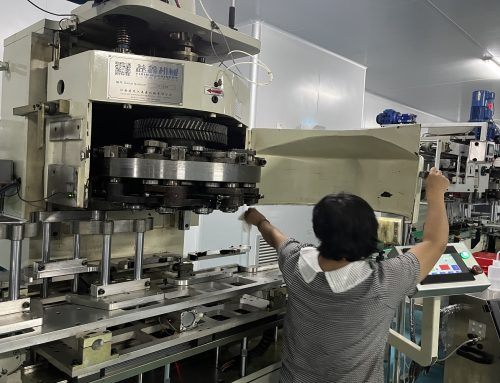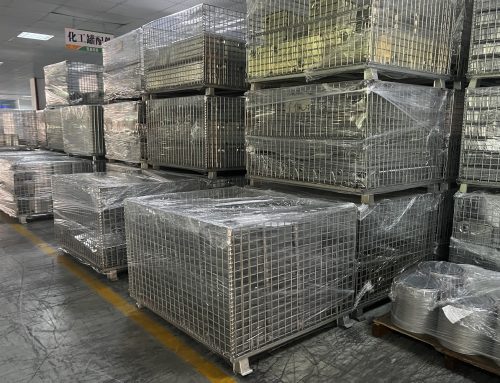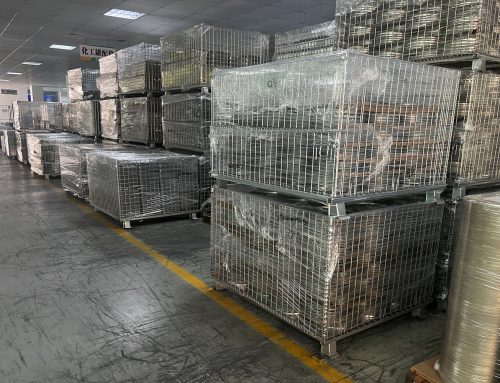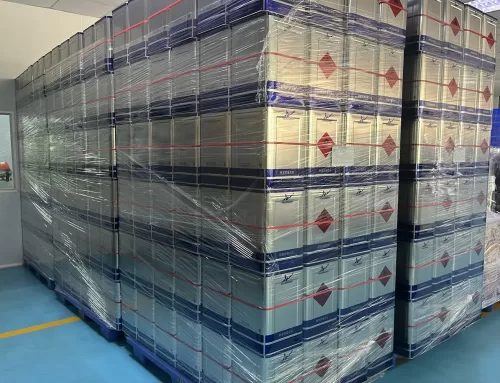After the epidemic has been raging for nearly two years, focusing on “sustainable development, forming, printing, finishing” and other aspects, the technological innovation of one-piece aluminum aerosol cans in Europe and the United States is still inexhaustible, as always, and continues to lead the global development vane , is invaluable.
When I checked the winners of the 2020 and 2021 Aerosol and Dispenser Forum Innovation Awards (ADF), German Packaging Award, and WorldAluminium Aerosol Can Award, I found that in the same Among the awards related to aluminum aerosol cans, the weight of the sustainable packaging award has increased significantly; in addition, the innovation direction of the award-winning products is basically based on the sustainable innovation of raw and auxiliary materials, which is nothing more than “packaging weight reduction, Increasing the composition of recycled materials and using ecological and environment-friendly ink coatings” continue to exert force in a certain direction to approach the limit, or a combination of two or even three, which can be said to have reached the peak.
In marketing design, forming processes such as 360° relief design and matching printing technology are favored. At the same time, the market also advocates that the printing deformation caused by the forming process should be fully considered in the image and text processing stage before plate making, so as to visually produce a pattern effect with just the right proportion. In addition, a variety of decorative finishing options, such as spot varnishing, hot stamping, and screen printing, not only give products a high-end and luxurious appearance, but also allow brands to experiment with design artworks on packaging that were previously unimaginable.
The aerosol can made by German can maker Tubex for Cien deodorant, a brand of Lidl supermarket in the UK, is said to be the first can in the world to use an eco-friendly, sustainable printing ink, with a “6% weight reduction, post-consumer can”. The recycled material (PCR) component accounts for 25%, and sustainable features such as internal coating, varnish, ink, and raw and auxiliary materials such as aluminum sheet alloys all have environmental benefits.” It has swept the aforementioned three packaging awards – not only won the “Sustainable Packaging Award” in this year’s German Packaging Award and the International Aluminium Aerosol Can Award, but also with the ink supplier PURe specially developed for Cien cans. TOPcolours also won the ADF “Concept of the Year” award this year. At the same time, the patented aluminum alloy containing PCR components jointly developed with the original aluminum sheet supplier NeumanAluminium also received the ADF award certificate.
Ecological Inks According to press releases and media reports, the TOPcolours inks developed by Tubex in an exclusive partnership with PURe do not contain mineral, palm, soybean or coconut oil, thus helping to protect Earth’s rainforests, and are also free of GMOs . At the same time, the ink linking agents are all derived from renewable resources and have not been chemically modified. In addition, the ink also does not have the problem of mandatory marking because it contains natural ingredients.
Partial powder coating and water-based varnish can significantly reduce VOCs emissions. Thanks to the use of both ecologically and environmentally beneficial internal coatings and varnishes, the VOCs emissions of Cien cans are significantly reduced during the production process. On the one hand, water-based varnishes are used outside the tank, resulting in a 60% reduction in solvent emissions. On the other hand, a protective powder coating is used inside the can and only 50% of the area is coated.
A patented aluminum alloy with PCR components that can reduce packaging weight. The Cien tank uses Neucan3.1, a patented aluminum alloy material jointly developed by Tubex and Neuman, which is said to have two major characteristics. First, the weight of the aerosol can can be reduced by 6%. According to the author’s speculation, the strength should be improved, so the can wall can be appropriately thinned.
The second is that the aluminum alloy contains 25% of PCR components, depending on the needs of users, the content of PCR can reach up to 60%. PCRs come from yellow garbage bags or trash cans, which are part of the German dual waste management system, which are designed to collect plastic, metal or composite packaging waste. PreZero Pyral, a professional enterprise in the field of aluminum packaging recycling and recycling, and Tubex have also established a closed-loop system for post-consumer aluminum packaging recycling through exclusive cooperation. The developed picking facility classifies the organic-free aluminium composition into a specific alloy, returning the aluminium to a dedicated “material ring”. In conclusion, the PCR used in the Cien tank is said to be a recycled material from the end user, which has been certified and documented at the source.
All of the above advantages are combined, and the Cien can is indeed the most sustainable one-piece aluminum aerosol can on the market.
Thanks to the long-term and continuous joint research and development of the aluminum sheet manufacturer Neuman Aluminium, the can factory Tubex and the user Unilever, the patented alloy Neucan 3.1 containing 25% PCR composition is used. Tubex is Unilever’s Rexona antiperspirant Aluminium Aerosol Products has developed an aluminum aerosol can, which has won the “Sustainable Packaging” award in the 2020 International Aluminum Aerosol Can Awards and the “Sustainable Innovation Award” certificate of ADF in 2021.
The aluminum alloy contains 25% PCR composition, and the weight of the can body is reduced by 14%. Through continuous optimization of the application, a patented aluminum alloy material with a 25% PCR composition, slight adjustments to the can shoulders, and a thinner can wall, the weight of the Rexona can has been reduced by as much as 14%.
Powder coating is used locally in the tank to avoid VOCs emission. Like the Cien tank, the Rexona tank also uses a protective powder coating in 50% of the area, which can avoid the generation of VOCs, and the environmental and ecological benefits are obvious.
Innovative packaging technology significantly improves the utilization of pallet and storage space. Considering that the thinning of the wall thickness of aerosol cans may be prone to dents during packaging and transportation, Tubex has also developed a new fully automatic packaging technology called “layer-widepackaging”. Since the cans are placed on pallets instead of being bundled and packed as before, it is claimed to increase the utilization of pallets, trucks and storage space by 15%.
It took Swiss can maker Nussbaum Matzingen a year to successfully develop in 2020 what it claims is the world’s first aluminum aerosol can that contains 100% post-consumer recycled aluminum without any virgin aluminum content. Received the “Sustainable Award” at the German Packaging Awards 2020 and the “Concept of the Year” certificate from ADF 2021.
According to an interview with Mr. Markus Tomasini, CTO of Nussbaum by European Aerosol Magazine, the raw material of 100% PCR aerosol cans comes from aluminum scrap of a single type material (mono-material) in the German yellow trash can waste treatment system , collected at the collection point, briqueted, recycled and made into aluminum original sheets, and finally made into aerosol cans by Nussbaum using the conventional impact extrusion production process. 100% PCR aerosol cans are comparable to standard aluminum aerosol cans made of virgin aluminum in terms of quality, appearance, safety and processability.
It is worth mentioning that the waste collection point, aluminum processing plant and canning factory are less than 150km away from each other, and the transportation route is relatively short, which greatly contributes to the implementation of the sustainable goals.
The effect of energy saving and carbon reduction is remarkable. As we all know, the electrolytic aluminum industry related to primary aluminum is a big consumer of electricity, so the energy saving effect of recycled aluminum goes without saying. In addition, according to the statistics of the European Aluminum Association quoted by Markus, compared with the production of 1 ton of primary aluminum, which emits 17 tons of CO2, the production of 1 ton of recycled aluminum only emits 0.5 tons of CO2, so the economic and environmental benefits of aerosol cans containing 100% PCR components Extremely significant.
Will work with the Nivea brand owner to realize the commercial application of aerosol cans. According to a press release, Beiersdorf, an international skin care company with top global brands including Nivea, will join forces with Nussbaum to launch a 100% PCR aluminum aerosol can as early as the end of 2021. 90% reduction in carbon footprint associated with fog cans.
Epilogue
It is foreseeable that sustainable development will always be a hot spot of innovation in the packaging industry, and one-piece aluminum aerosol cans and even the metal packaging industry are no exception. The European and American one-piece aluminum aerosol can industry has achieved fruitful results in the innovative direction of sustainable raw materials and auxiliary materials based on innovation-driven and constructive cooperation of industry chain participants. Once it is widely promoted and applied, it will inevitably produce huge ecological and environmental benefits.





